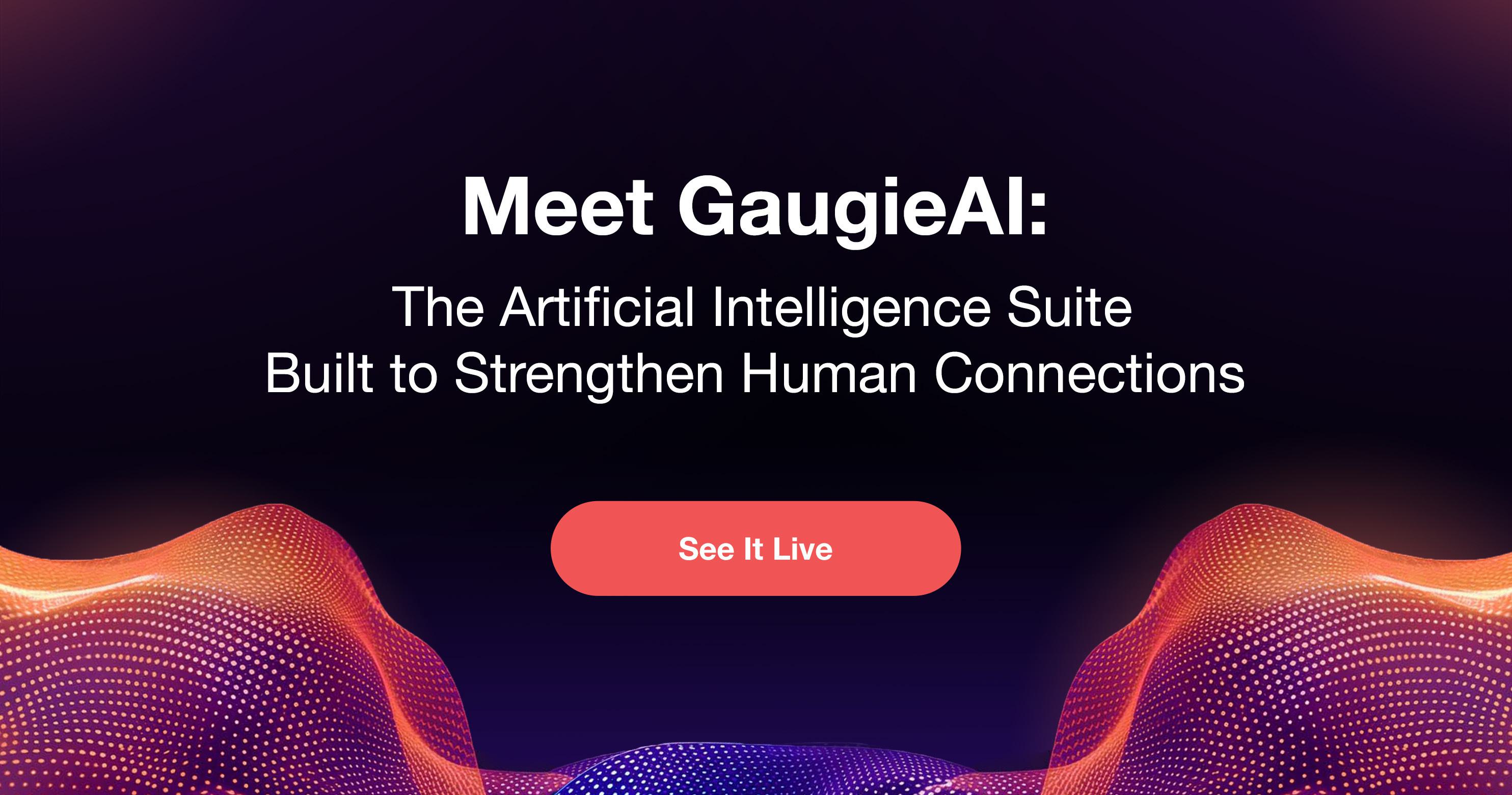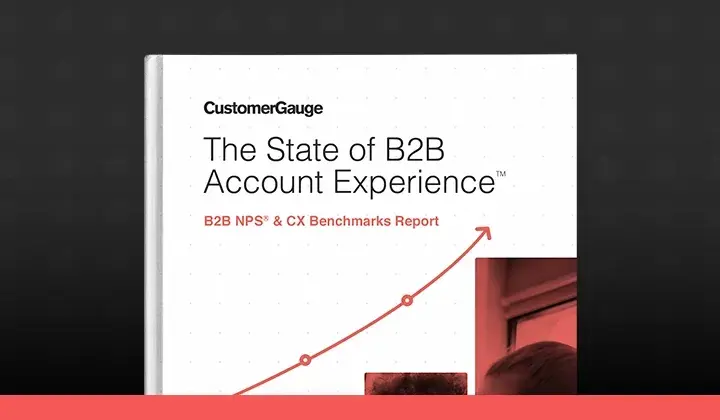In the race to automate through artificial intelligence (AI), are we neglecting our customer experience (CX)?
The power of automation is undeniable, from chatbots that resolve issues in seconds to predictive analytics that anticipate customer needs before they even arise.
Efficiency is up, response times are down, and personalization is at an all-time high.
And yet, something’s missing.
Customers are reporting increased frustration with brands that overrely on AI. According to Gartner, 64% of customers even say they would prefer that companies didn’t use AI for customer service.
However, Gartner also says that Agentic AI will autonomously resolve 80 percent of common customer service issues without human intervention by 2029.
If this leaves you with zero clue of where to start when it comes to incorporating AI into your customer experience program, you’re not alone.
Welcome to the CX and AI paradox.
Our customer experience experts sat down to dive into this concept further on our recent webinar, How to Adapt and Accelerate in the AI Experience Era.
🎙️Speakers:
Adam Dorrell, CustomerGauge CEO and Co-Founder
Camilla Sholten, CustomerGauge COO and Co-Founder
Trishaala Chengappa, CustomerGauge Vice President of Product Management
Let’s get into it.
The Rise of the AI-Centric Experience
AI is quickly becoming a cornerstone of modern CX strategies.
65% of our webinar attendees let us know they're already experimenting with AI in their CX strategies.
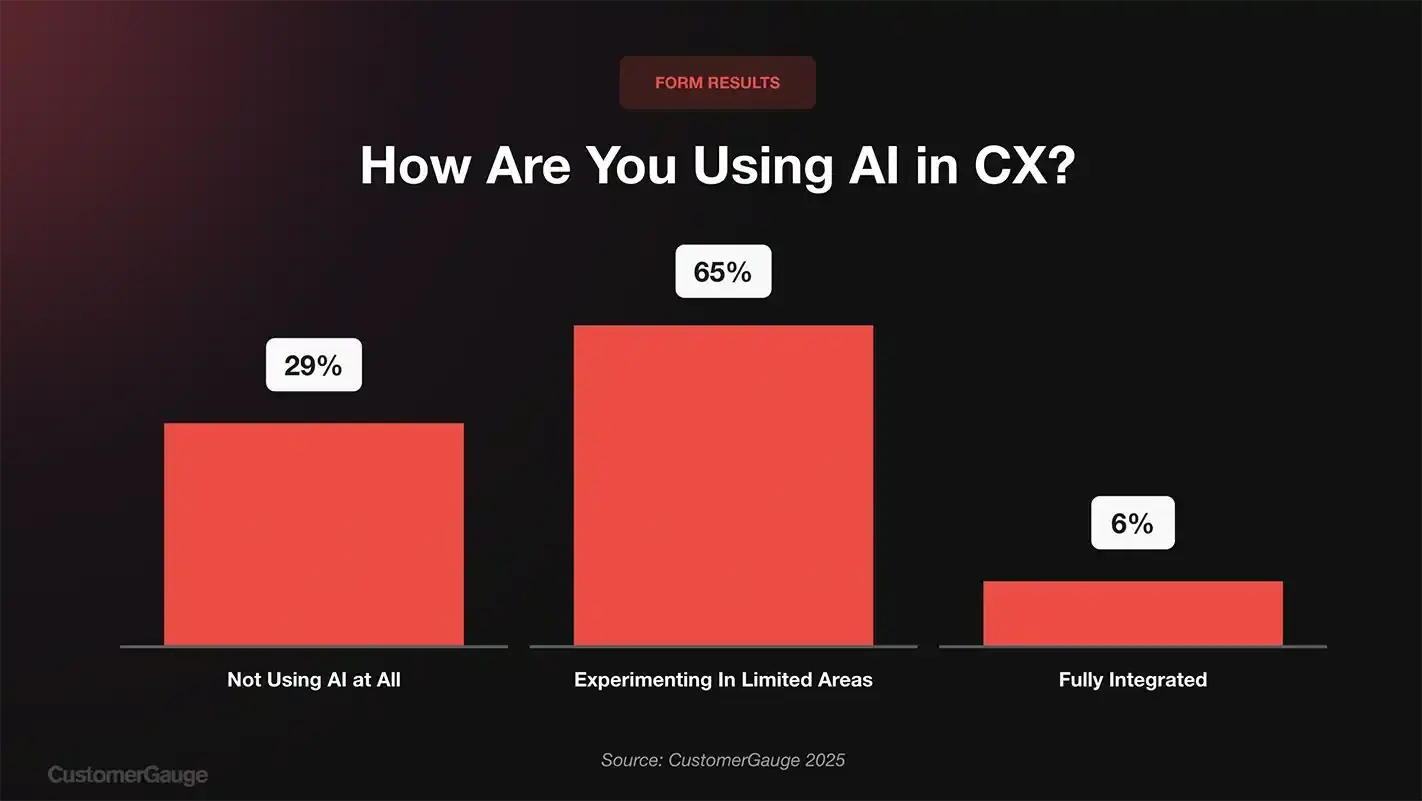
As we said earlier, Gartner has predicted that agentic AI will autonomously resolve 80% of common customer service issues without human intervention by 2029, leading to a 30% reduction in operational costs — that’s big.
Whether it's conversational AI handling frontline support or recommendation engines shaping customer journeys, automation does allow businesses to do more with less.
At the time of our last webinar, Generative AI was just beginning to gain traction across industries. Fast forward to today, and Agentic AI is on the rise, quickly becoming a cornerstone of business strategies.
⛓️ But here’s the problem: automated doesn’t always mean connected.
Humans don’t just want answers, they want to be heard and feel understood.
While AI can simulate empathy, it rarely delivers it in a way that truly resonates. The risk? Replacing friction with detachment.
The Risk of Over-Relying on AI
While AI offers powerful tools to enhance customer experience, over-reliance on these systems introduces significant risks that organizations should tread lightly with.
Despite advances in automation, we learned in our webinar that customers still deeply value empathy, emotion, and authentic human connection.
When companies lean too heavily on AI, they risk stripping away the personal interactions that foster trust and loyalty, leaving customers feeling emotionally disconnected and undervalued.
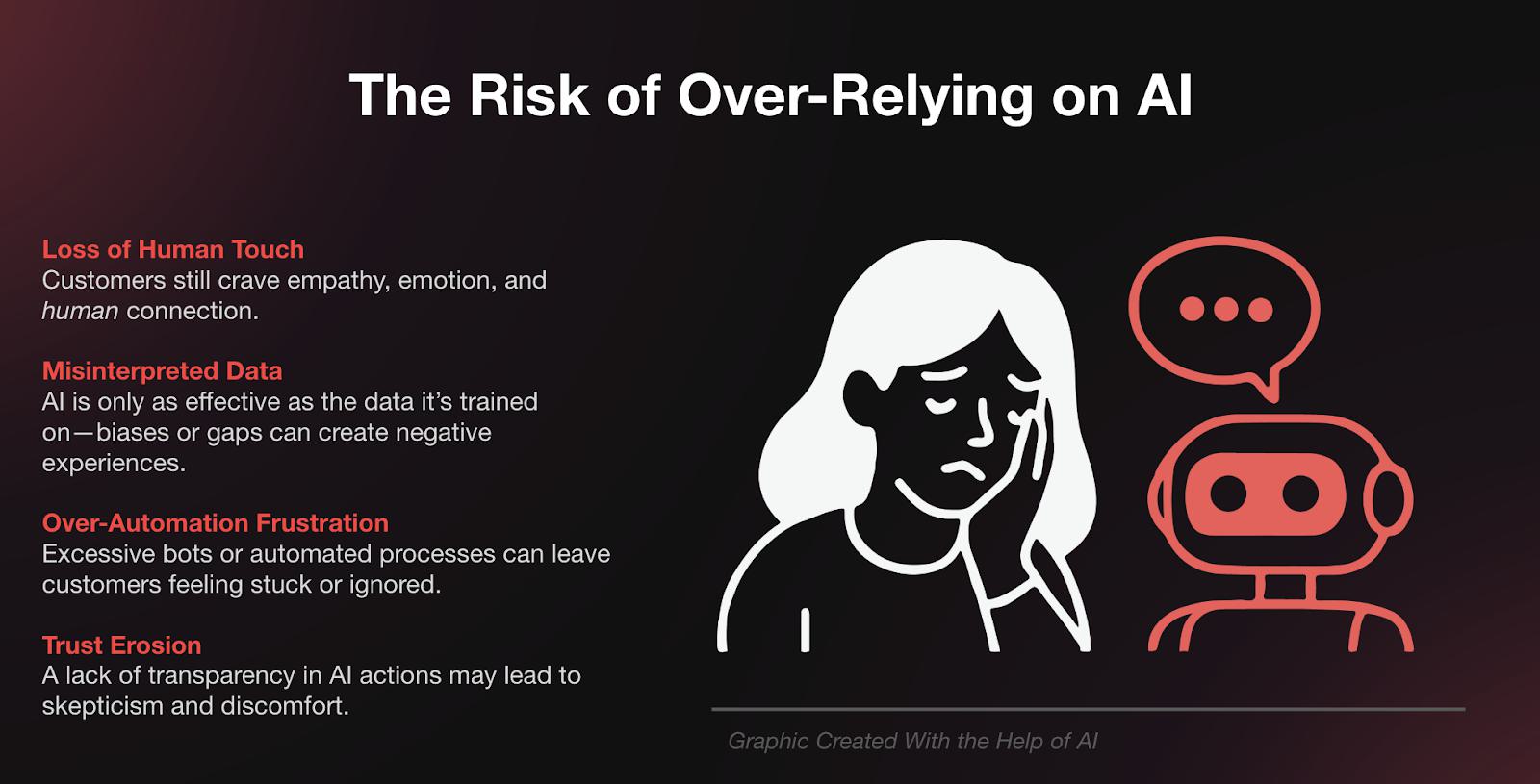
Automated but Alienated: The AI/CX Paradox
The market is loudly demanding more AI, faster, smarter, everywhere.
Businesses are under pressure to automate, personalize, and scale with AI-powered tools.
But here’s the catch: while investment in AI is skyrocketing, customer satisfaction is lagging.
People want better experiences, not just more technology. Instead, they’re often met with clunky chatbots, impersonal interactions, or a sense that they’re being shuffled through a digital system instead of genuinely heard.
The AI and CX Paradox is this growing gap between what the market rewards (AI adoption) and what customers actually value (human-centered, intuitive experiences).
The challenge? Using AI not just because we can, but in a way that truly enhances the customer experience.
Building an AI-Ready Culture: Strategy, Skill & Security
To successfully integrate AI into B2B customer experience, organizations must adopt a human-first approach — one that balances cutting-edge tools with empathy, ethical safeguards, and a clear purpose.
As the image below outlines, the three pillars of AI success are:
Strategy: Ensuring AI supports (not replaces) human connection, with ethical guidelines and cross-department alignment.
Skill: Building AI literacy, upskilling teams, and training broadly across the organization.
Security: Prioritizing transparent AI use, privacy protections, and psychological safety.
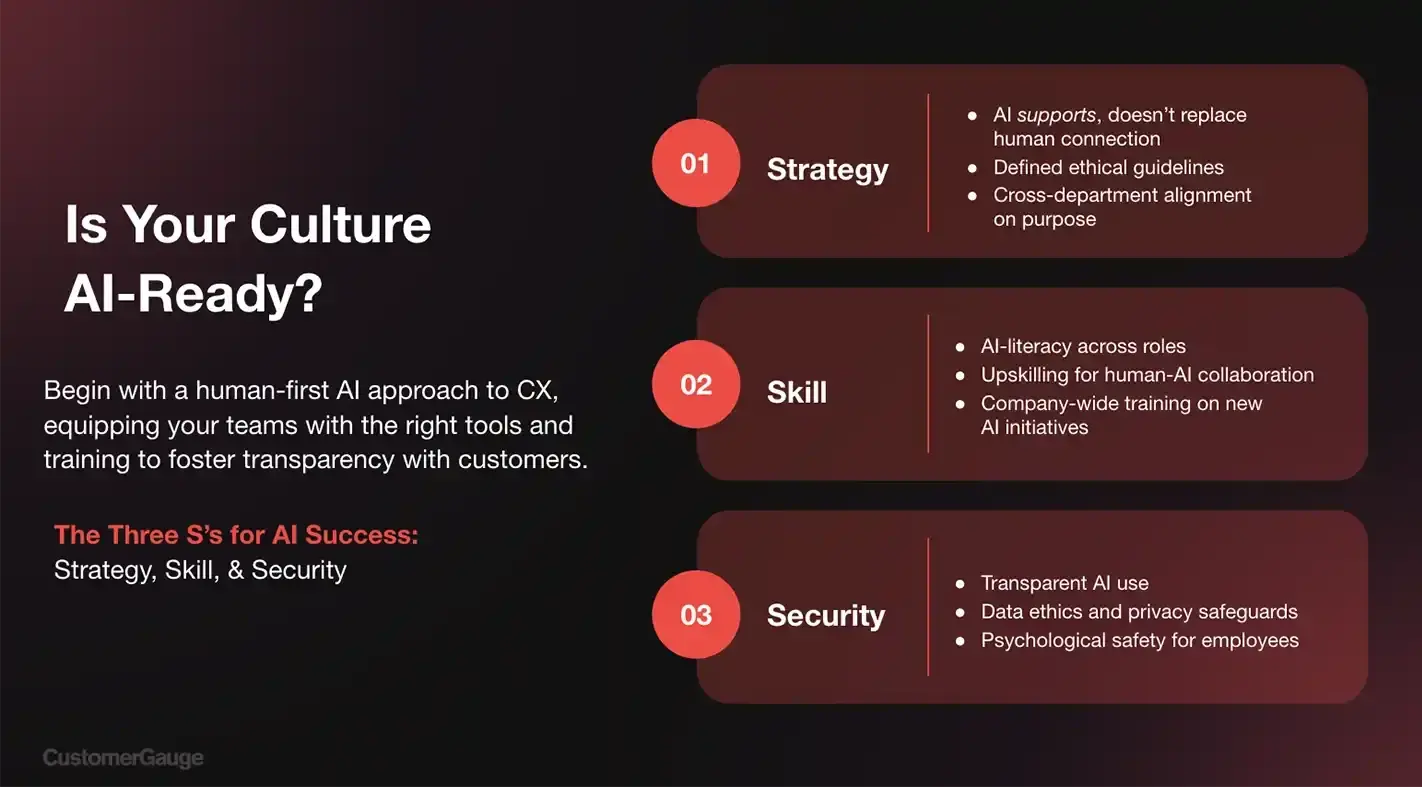
Trishaala said, “We have to be very careful about where our data’s going, that you’re not just becoming part of somebody’s future dataset…whatever we do, it’s done in a very high security.”
This focus on data ethics and practical safeguards is essential not just for regulatory compliance (like the incoming EU AI Act) but for maintaining customer trust, the true foundation of lasting relationships.
The Current State: CustomerGauge's Artificial Intelligence Suite
Feedback AI Assistant
The text and sentiment analysis feature through the Feedback AI Assistant leverages AI to scan through large volumes of customer feedback, identifying patterns, themes, and emotional tones embedded in the text. What sets this apart is not just the ability to detect sentiments but its integration into actionable workflows.
For example, if promoter feedback contains a negative theme, the system can automatically trigger an alert to the appropriate team, ensuring a rapid response.
Beyond immediate reactions, the tool also evaluates the business impact of specific topics, helping organizations understand what percentage of their customer base might be at risk and whether investing in resolving certain issues is worthwhile.
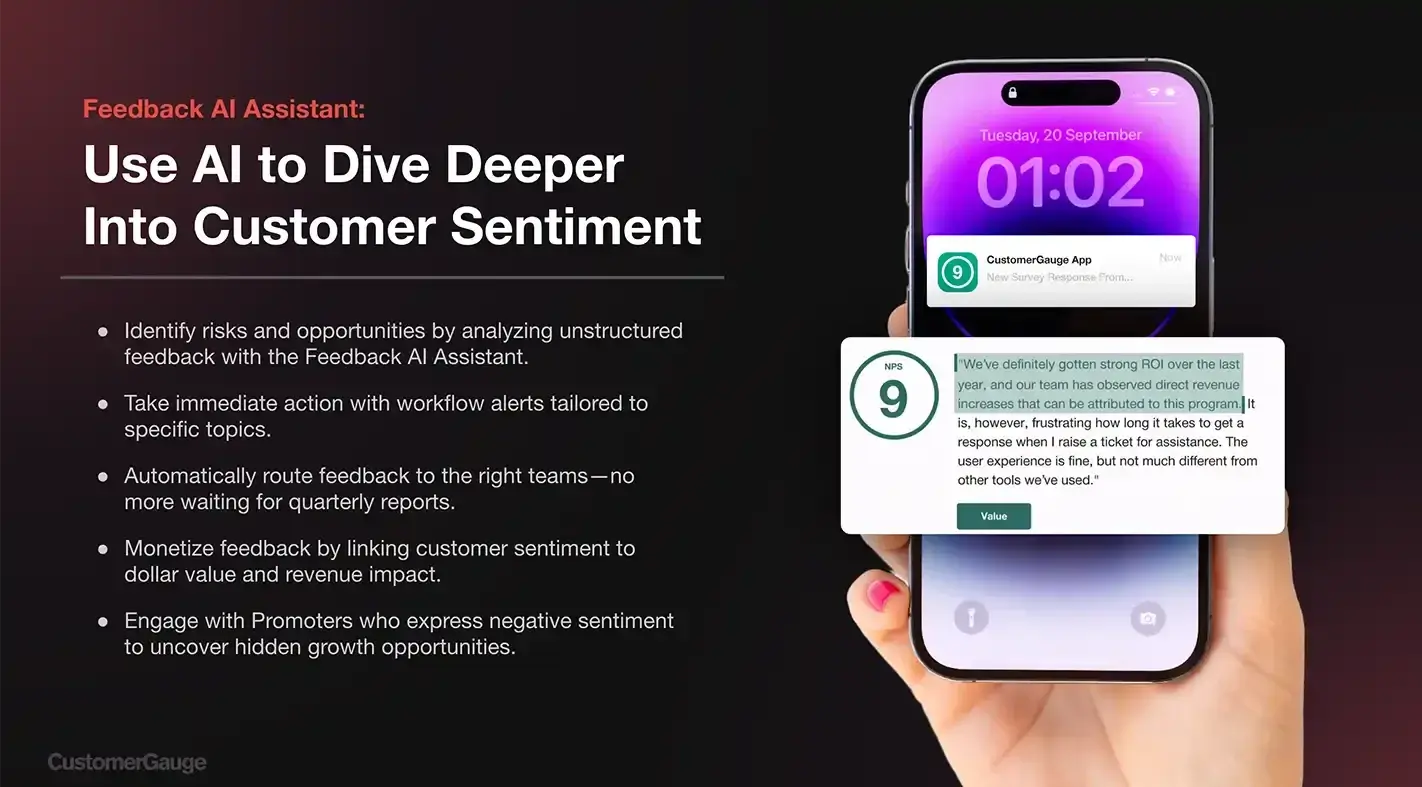
Close the Loop Assistant
The Close-the-Loop AI Assistant is designed to ease one of the toughest frontline tasks: responding to detractor feedback.
Confronting negative feedback can be emotionally and logistically challenging, often requiring well-crafted, timely, and professional responses. This AI-driven assistant automatically generates templated responses based on incoming feedback, which can be sent directly or used as a script for phone conversations.
The result is significant time savings and improved consistency across teams. By removing the psychological and operational barriers to engaging with detractors, this tool empowers frontline employees, helping organizations maintain accountability and strengthen customer relationships at scale.
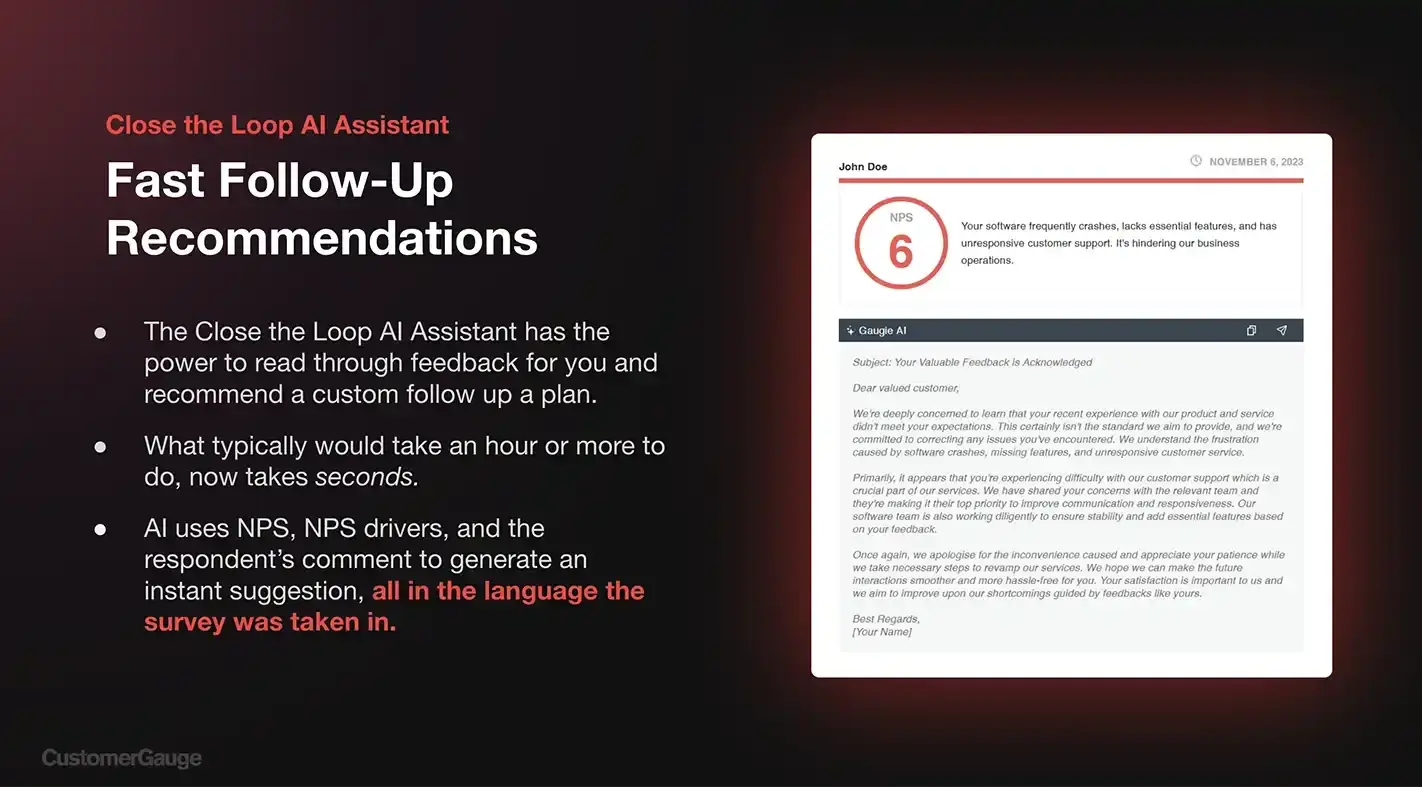
Relationship AI Assistant
The Relationship AI Assistant focuses on supporting account-level management by providing rich, contextual insights into customer relationships. Rather than relying on manual report pulling or fragmented data reviews, this tool summarizes account histories, identifies key trends, highlights pain points, and pinpoints actionable opportunities.
For account managers and business development representatives, it serves as a quick pre-meeting briefing tool, offering a holistic view of the client relationship without the need for deep manual analysis.
It even picks up on customer-provided suggestions or “bright ideas,” helping teams proactively implement improvements.
By combining historical context with forward-looking insights, this assistant significantly enhances the quality of human interactions in B2B settings.
Account Experience (AX) AI Assistant
The Ask-me-Anything AI Assistant operates like an on-demand chatbot, giving program owners and account teams immediate access to answers hidden within massive datasets.
Instead of combing through detailed reports or waiting on analysis from specialized teams, users can pose natural-language questions such as “What are the top customer issues in this region?” or “Where are we seeing untagged themes in feedback?” and get instant, actionable insights.
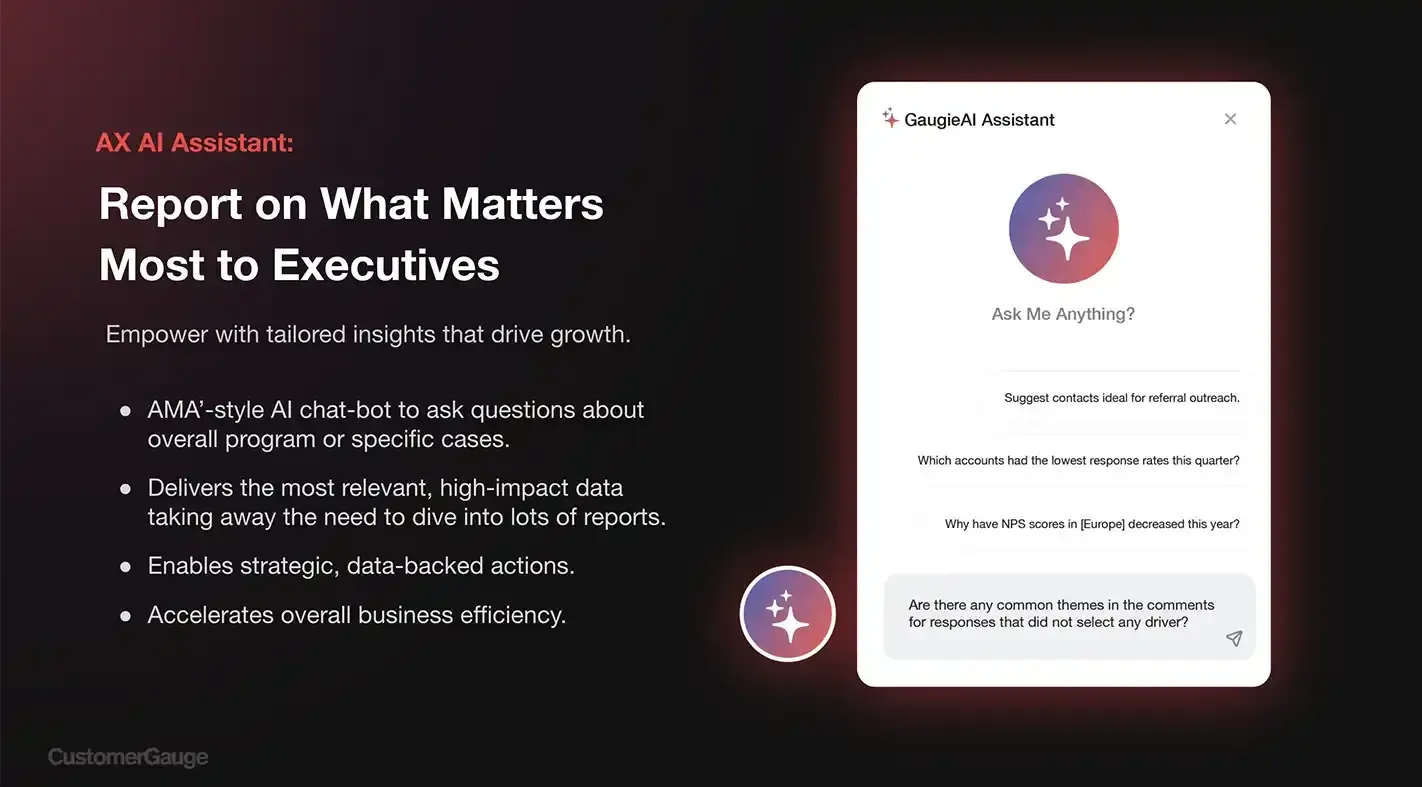
“We don’t want to drive everybody towards an AI agent if it’s not appropriate… start simple, and AI helps you refocus rather than replace," said Trishaala.
This tool democratizes access to deep analytics, placing the power of AI directly in the hands of those responsible for driving change.
Importantly, it signals a shift toward a future where reporting structures are less rigid, and real-time, flexible AI-driven queries become the norm for organizational learning and adaptation.
The Future State: What is Synthetic NPS?
While surveys aren’t going away anytime soon, we've observed the market moving toward combining data from multiple sources, like unstructured feedback, support tickets, and email communications, to simulate a synthetic Net Promoter Score (NPS), even for non-responders.
By layering and calibrating this data, we can deliver a broader, more accurate picture of customer sentiment and scale our insights across all areas of the business.
World-Class CX Programs Advancing With AI
Companies like Sutherland, Coca-Cola LATAM, and ThaiNamThip work closely with CustomerGauge to embed AI into their customer programs.
From using GaugeAI to help frontline teams close the loop across multiple languages, including Spanish, Portuguese, AND Thai, to adapting AI tools for relationship-level insights and quick Q&A support, these collaborations are shaping practical, real-world use cases.
“It’s really about making sure the AI capabilities do support all of the languages that our customers operate in across the world," said Trishaala.
AI Refocuses, Never Replaces B2B Customer Experience
Great CX is ultimately about how customers feel. Do they feel seen, valued, and respected, or just another ticket in the queue?
Every AI-driven solution should meet a simple standard: Does it feel human?
Not in the “uncanny valley” sense, where systems mimic humans but miss the mark on realism.
In the emotionally intuitive sense: Does the experience convey care? Does it allow for nuance? Can a real person step in when needed?
Because when AI is used to elevate human connection, customers don’t just get faster service, they get better service.
So, let’s build AI that listens like a human, learns like a machine, and never loses sight of the person on the other end.
